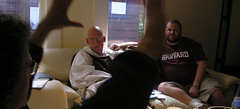Revolutions in Paper

Revolutions in bureaucracy and the limitation of political participation has, in modern history, frequently been a reflection of the number of pages of paper which experts produce, a social and political clout, with which to disarm and outrank their political opponents. In debates where peasants with oral traditions are faced down by civil engineers with reams of paper, the civil engineers always win. Paper had been an instrument of overwhelm.
Not everyone always thought so, and that’s one of the reasons for the proliferation of paper in the twentieth century, when many administrators looked to mere quantity of paper as an exercise in opening government. So thought Patrick Geddes, one of the founders of modern urban planning. In one of his last articles in the 1940s he boasted about his contributions to town planning by referring to the hundreds of pages of documentation created by each town meeting. Surely, he reasoned, such a proliferation of paper would open up the reasoning of previously closed sessions to outsiders of different backgrounds or experience.
But in the 1950s and 1960s as the rise of NGOs came to ring conversations about urban planning and international development with coordinated institutions, all of them creating more paper, even the process of finding one’s way to the beginning of an argument became a labor reserved for the few and privileged. Introductory texts to these problems increasingly included an organizational flow-chart, a diagram borrowed from business texts, which served as a map to tell would-be activists where, in the vast continent of NGOs, banks, and government organizations, they entered the conversation.
Paper had been looked to as a tool for broadening the conversation, and it worked, bringing in multiple interests and creating unlimited flows of information. Did it work too well? Was so much paper produced as to make participation by nonelites in the developing world and the wrong side of town nearly impossible, thanks to the disproportionate time of education and reading required to sort through so much paper? That is a historical question, and it can be answered by solving a quantitative question in the stacks: How much paper was produced and by whom?
The terrific, gorgeous, and new experimental application Stackview, one of the first projects of the Berkman Center's expanding suite of public library interventions, allows a user to visualize the production of paper in a certain subject area as the width of volumes in a stack. It does not yet allow the comparison of different subject areas by time -- say the amount of pages produced in town planning between 1900 and 1950, or produced in economics textbooks printed in India and South America against those printed in the West.
I would like to visualize these things.
Coda:
Now at this point in the game, two things could happen: One, Stackview itself could decide that this is a worthy kind of metric, and that other researchers might use it, and they could build it out as part of the package itself. Two, some enterprising young coder could pursue the development of an open-source widget to do something like this.
Unfortunately, this is *exactly* where a lot of digital projects stall -- a tool is made that does something MASSIVELY COOL, and then, a few minutes after the launch, some pouty scholar wanders into the room is all like BUT I WANT IT TO FLY AND ALSO COME IN PINK. If the scholar is particularly pouty, then scholar-librarian-coder relationships break down. SOLUTION: sometimes the scholar has a tricky little experimentation fund, doesn't pout too much, and is up for chatting about developing things together [raises eyebrow]. I'm winking at you, dear readers...
(Photo Credit: Natalia Osiatynska)
Labels: digital humanities, history, libraries, visualization










0 Comments:
Post a Comment
<< Home